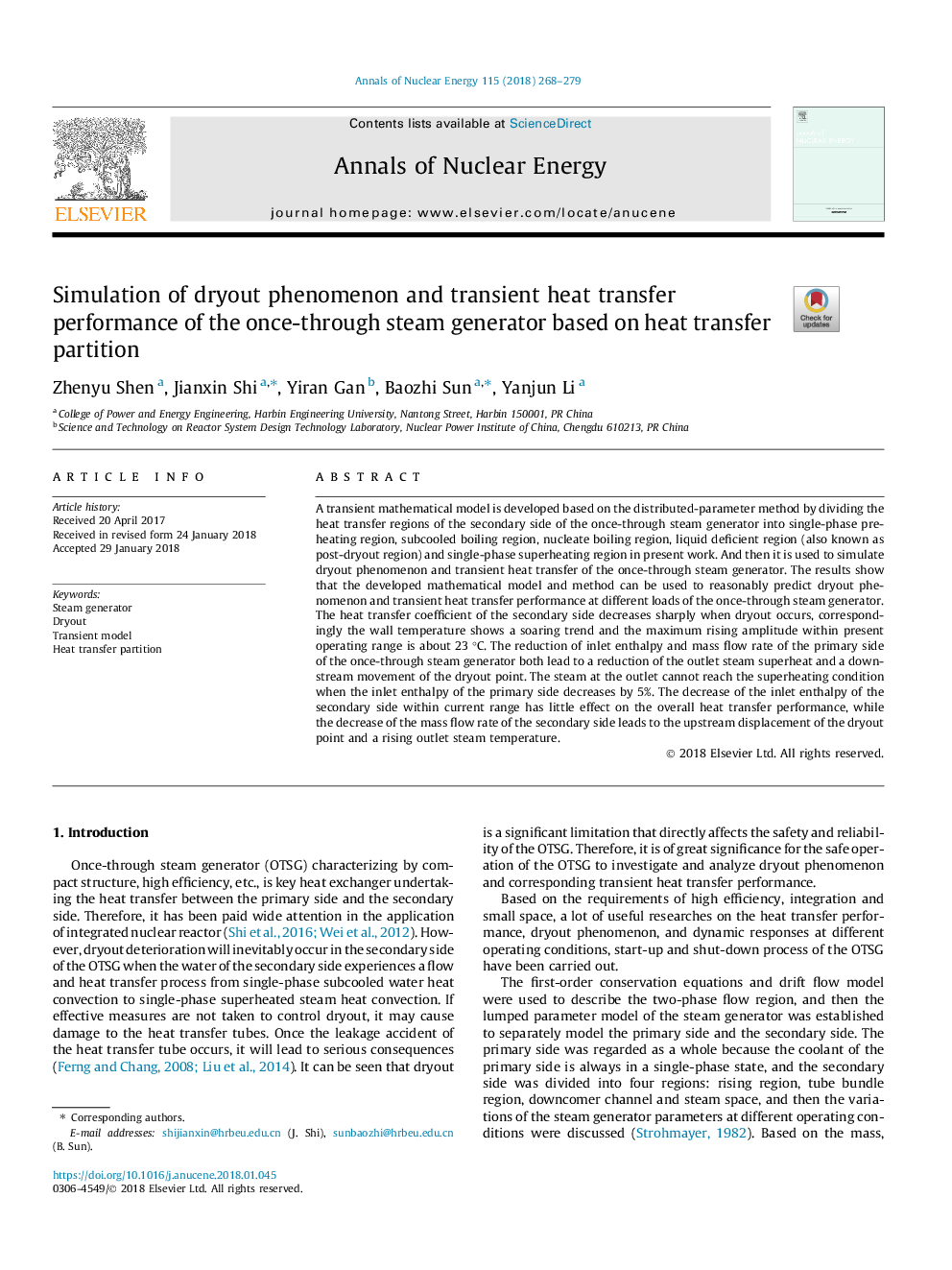| Article ID | Journal | Published Year | Pages | File Type |
|---|---|---|---|---|
| 8067088 | Annals of Nuclear Energy | 2018 | 12 Pages |
Abstract
A transient mathematical model is developed based on the distributed-parameter method by dividing the heat transfer regions of the secondary side of the once-through steam generator into single-phase preheating region, subcooled boiling region, nucleate boiling region, liquid deficient region (also known as post-dryout region) and single-phase superheating region in present work. And then it is used to simulate dryout phenomenon and transient heat transfer of the once-through steam generator. The results show that the developed mathematical model and method can be used to reasonably predict dryout phenomenon and transient heat transfer performance at different loads of the once-through steam generator. The heat transfer coefficient of the secondary side decreases sharply when dryout occurs, correspondingly the wall temperature shows a soaring trend and the maximum rising amplitude within present operating range is about 23â¯Â°C. The reduction of inlet enthalpy and mass flow rate of the primary side of the once-through steam generator both lead to a reduction of the outlet steam superheat and a downstream movement of the dryout point. The steam at the outlet cannot reach the superheating condition when the inlet enthalpy of the primary side decreases by 5%. The decrease of the inlet enthalpy of the secondary side within current range has little effect on the overall heat transfer performance, while the decrease of the mass flow rate of the secondary side leads to the upstream displacement of the dryout point and a rising outlet steam temperature.
Keywords
Related Topics
Physical Sciences and Engineering
Energy
Energy Engineering and Power Technology
Authors
Zhenyu Shen, Jianxin Shi, Yiran Gan, Baozhi Sun, Yanjun Li,
